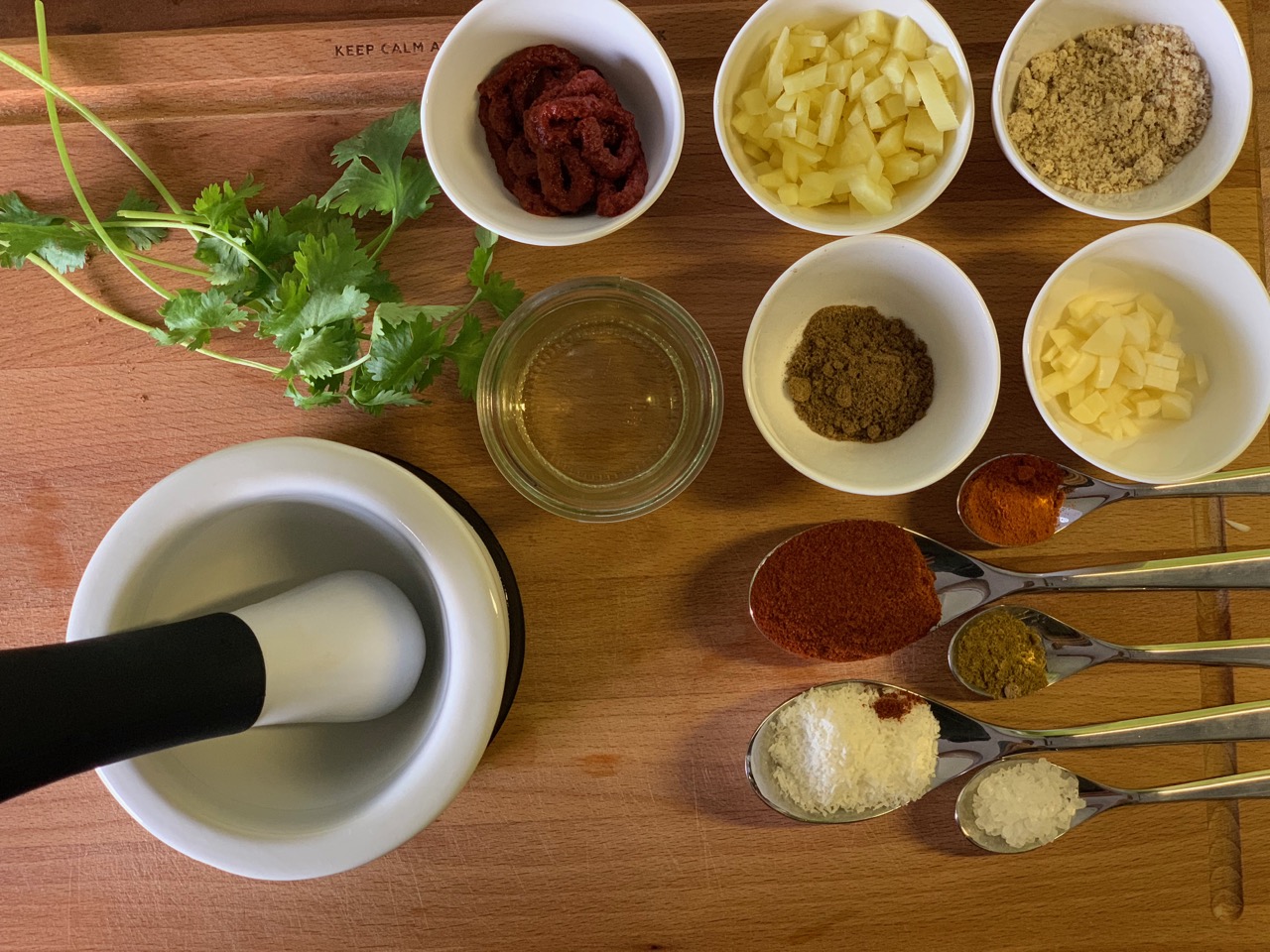Salt Fat Acid Heat - Mastering the Elements of Good Cooking
“Commit to mastering salt, fat, acid and heat and you can become a great cook.”
Salt Fat Acid Heat is probably the cookbook that changed the way I approach cooking the most.
I own various cookbooks from different authors, but usually they “just” contain a list of recipes alongside some super beautiful photos of the result.
Samin Nosrat puts the focus somewhere else.
She boils good dishes down to 4 main ingredients: Salt, fat, acid and heat. When, how long, how much and in what form any of these ingredients are added, is what can bring an ordinary dish to the next level.
Also she explains what any of the ingredients does to a dish, wish helped me to better understand how to cook.
While reading the book I thought multiple times: “I would really like to cook now.”
One of Samin Nosrat’s mantras is, that you have to taste again and again while your are cooking. And that this is much more important than strictly following a recipe. This is also one reason why there are no glossy food photos in this book.
And even though this sounds a little bit strange it totally works out. You’ll get some nice illustrations by Wendy MacNoughton and for the rest Samin Nosrat encourages you to find your own style.
There is also a Netflix show inspired by the book and produced by Samin Nosrat
Below you can find my highlights from the different chapters.
“Salt brings food to live”
One major thing I immediately changed while reading the book was my usage of salt.
I increased for example the amount of salt I put in water to cook noodles. It should taste like the memory of sea water. So quite salty. At first I thought this might be too much. But most of the water and therefore the salt ends up in the drain anyway. However I had to learn the hard (or salty) way, that the same does not apply to rice - obviously.
Another thing literally blew my mind. Mainly because it’s so simple and should be obvious: When you are not sure if you should add more salt (or basically any spice) to a dish, just take a spoon of your dish and salt on the spoon. Does it taste better? Add more salt to the pot. So easy, so helpful!
Also I now take into account the saltiness of other ingredients when thinking about the amount of salt I add. For example olives, cheese, capers or anchovies are great suppliers of salt for a dish.
“Fat makes food delicious”
The choice of the fat has a significant influence on the taste of a dish. Olive oil will for example always give a mediterranean flavor whereas the french cuisine is more based on butter as fat supplier.
But the fat chapter had one more special revelation for me: The reason why my favorite cake is my favorite cake. I already knew that one of the ingredients in my favorite cake is oil but as I’m not so much into baking I didn’t know - or care - if this makes a difference to butter. Now I know that oil coats flour proteins and therefore prevents strong gluten networks leading to a more tender texture in the cake.
“Acid balances flavors”
Acid was the element which was the hardest for me to grasp and understand. But the book contained some interesting examples that helped understand the importance of acid in a dish.
The acid of tomatoes for example prevents onions from getting tender and soft. That’s the reason why recipes usually tell you to first cook only the onions and then add tomatoes do it.
Another thing I learned from the chapter on acid was the maceration of onions. Before using raw onions e.g. in a salad, you should let them soak for about 15 minutes in some acid (e.g. vinegar or citrus juice). It will soften the onions and remove some of the acrid taste.
“Heat: The element of transformation”
Cooking does not start with turning on the stove. Ingredients cook differently if they just came out of the fridge or if they already have room temperature. Meat should always have room temperature before being put in a pan.
Also cooking does not end when turning off the stove. Residual heat trapped within food lead to continued cooking, the so called carryover effect. A roast for example can carry over - or rise in temperature - up to five degrees celsius after being removed from heat.
Another important takeaway from the heat chapter is the strict order of pre-heating the pan, adding the fat only when the pan is hot and only then adding the meat (at room temperature).
Conclusion
I can give you only a glimpse of what you fill find in the book. I strongly recommend the book (personalized link) if you want to upgrade your cooking.
It opened my eyes in various different ways and helped me to better understand what makes a great dish.
I want to close with a small personal anecdote:
We have clearly separated the tasks in the kitchen for years. My wife does everything related to baking and I’m responsible for cooking (we share the eating part ;) ). Since I started to read “Salt Fat Acid Heat” my wife says more than ever before things along the lines: “This tasted so good, you should cook this recipe more often.”. And I can clearly attribute that to small changes I’ve done to my cooking because of this book.






